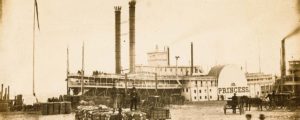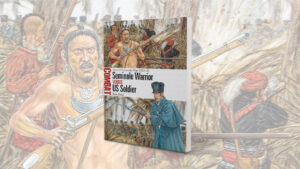A photographer adds an extra ‘body’ to hype his work.
Photographer Thomas C. Roche and his assistant raced into Fort Mahone on April 3, 1865, the day after the Rebel stronghold in the Petersburg line fell to a Union assault. Roche knew his business. He was eager to document for the first time the Confederate fortifications that had withstood Union attackers for all of 10 months. Determined to arrive ahead of burial parties, Roche was elated when he spied dead Confederates still littering the muddy ground near a battery.
It’s so far proved impossible to pinpoint where Roche was when he made the images shown here. But he took three photos of the same artilleryman from different angles. Given the shadows, they were taken near noon. They were likely the last of more than 50 images Roche captured of the dead that day, according to expert William Frassanito, “one of the most extensive and concentrated series of battlefield views ever recorded by any single Civil War photographer, of any one subject, at any one site, and on any one day during the entire war.”
Roche could be excused for adding props to some images—a rifle, hat, broken artillery sponge—as it was a common practice. That added drama and boosted the 3-D effect when a viewer looked at an image through a stereoscopic viewer. But adding a false corpse took it to another level. At any rate, his quick work that day earned Roche a full-time job with E. & H.T. Anthony, the nation’s largest purveyor of stereo views.
The last image of the series is unsettling. Suddenly we’re presented with two bodies—our unfortunate Rebel artilleryman and another man lying beyond him in a rut. Behind both bodies a horse waits patiently, likely harnessed to the photographer’s wagon. Now we can see that the buttons have been cut from the uniform worn by the man in the foreground, subject of the previous images.
The continued presence of the broken sponge is an indication that this is the third image in the series. Roche’s original caption, as documented by Frassanito in his book Grant and Lee, reads: “Rebel artillery soldiers, killed in the trenches of Fort Mahone….The one in the foreground has U.S. belts on, probably taken from a Union soldier prisoner; his uniform is grey cloth trimmed with red.”
We know that earlier that day Roche had taken great pains to position his camera at the proper angle to capture multiple bodies whenever he could. Why didn’t he frame both these bodies in his first image? Why save it for last?
Then again, looking closely at the second victim’s hair and skin, it’s apparent that this new “body” is a black man wearing civilian clothes. Was this perhaps a servant who had been killed by the same shell as the first man? Or should we see it as proof that black men were fighting for the Confederacy?
The answer lies in an image captured later that same day or the next, after Roche had continued on into Petersburg. In this photo, captioned by the Library of Congress “Petersburg, Virginia; view in rear of Dunlop’s house, Bolling Brook Street,” we see that our black “corpse” is still very much alive, and wearing the same vest, plaid pants and slouchy boots we saw before. It would appear that Roche posed his teamster in the third image of the series, placing him discretely in the rear, with his face turned away from the camera. Roche likely embellished his own caption, describing the U.S. belts and uniform trim—seemingly to concentrate the viewer’s attention on the photo’s foreground.
Apparently Roche had run out of dead men to photograph that day, but was not yet ready to pack it in. The dead artilleryman, broken sponge and a final prop, his own teamster, completed his stereoscopic composition, providing a not-so-subtle reminder for those interested in Civil War photography that seeing is not always believing.
Originally published in the December 2010 issue of Civil War Times. To subscribe, click here.




